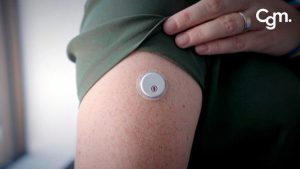Diabetic Shock: The Importance of Regular Blood Sugar Monitoring

What is Diabetic Shock in Diabetes?
Diabetic patients are vulnerable to facing many types of complications. Diabetic Shock is one of the most common among them. When the blood sugar level of a patient drops too much, the body goes into hypoglycaemia. It may result in some severe symptoms that can be fatal for the patients. When the blood runs out of enough sugar, the human body reacts against it and blasts many acute symptoms. They include loss of consciousness, double vision, speaking problems, etc. If ignored for a longer duration, it may lead to the death of the patient. The worst part is that it all occurs suddenly. Sometimes patients do not get enough time to get back to their senses and take suitable measures to tackle the situation.

Diabetic shock is not associated with a certain type of diabetes. However, some researches show that it is more common in people suffering from type 1 diabetes. People having type 2 diabetes who are taking insulin, may also go into a diabetic shock in certain circumstances. Appropriate and timely treatment is required to cope with emergency circumstances.
Diabetic Shock Symptoms
Diabetic Shock is not always too sudden that the patient does not notice it coming. Patients mostly feel symptoms of hypoglycaemia before getting into a shock. They are mild and can be managed by the patient, easily. They act as early warning signs for patients that include:
- Mild to Severe Headache
- Dizziness and Confusion
- Irritability and Anxiety must not be ignored
- Sweating and Shakiness
- Severe Hunger
Some patients ignore these symptoms which may lead them to diabetic shock. It can be due to many reasons. First and the most important one is the lack of knowledge about the condition. The second one is not taking it as a serious matter. The third one is the unavailability of the treating elements at that time.
When hypoglycaemia prevails, it may lead to hypoglycaemic shock. This situation is catastrophic and is considered a medical emergency. The symptoms suddenly pick up severity putting the patient in a fatal situation. Symptoms of diabetic shock include:
- Loss of Consciousness is one of the major symptoms
- The patient also suffers from blurred vision
- Difficulty in speech
- Seizures, jerky movements, and convulsions are also obeyed in diabetic shock patients.
Causes of Diabetic Shock
The primary cause behind diabetic shock is hypoglycaemia. Many factors can reduce the sugar level in the blood to a great extent. These factors are considered to be secondary causes of insulin shock in diabetic patients. Some of them are as follows:
- Taking more quantity of insulin than is needed by the patient’s body. It drastically deprives blood glucose content.
- The exercise routine of patients may also cause hypoglycaemia. Certain strenuous exercises may consume much of your energy which decreases the sugar content in patients’ bodies.
- Poor eating habits and inadequate diet can also lead to severe hypoglycaemia that can convert into a shock.
- Certain illness and consuming too much alcohol is also leading cause of diabetic shock.
Role of Continuous Glucose monitoring system in its prevention
Glucose monitoring is mandatory for diabetic patients so that they remain aware of the extent of their disorder. Various devices can be used for this purpose. Continues glucose monitoring system is one of the most efficient devices to use in this regard. It helps you determine your blood glucose level throughout the day. CGM system is highly comfortable to use. It is also famous for its sustainability which makes it useful for a long duration.

A Continuous Glucose Monitoring system does not only keep the patients aware of their body sugar levels. It also acts as a warning device for you to avoid hazardous circumstances. If your sugar level goes beyond the normal range, the device begins to beep. This feature can be lifesaving in numerous situations. Keeping a record of blood glucose has also been made easy by the blessing of this device.

CGM system also plays a significant role in preventing patients from diabetic shock in the following ways:
- A Continuous Glucose Monitoring system allows patients to keep a check on their sugar levels. If it falls to 70 mg/dl, the risk of diabetic shock increases. By using CGM you can stay far from the danger line.
- We know that diabetic shock is an emergency condition, and it is essential to take suitable steps to treat it timely. If it is not managed, the consequences can go worse to death. The Continuous Glucose Monitoring system allows you to take the required actions timely. You can consume sugary content immediately if the device begins to beep due to low sugar levels.
- Sometimes your treatment does not work effectively due to multiple reasons. If you are unaware of the effectiveness of your treatment, you may have to bear a great loss. CGM not only allows you to keep an eye on your blood glucose level before taking a remedy but also helps you keep the effect of your remedy afterwards. If you consume sugary content and CGM still shows hypoglycaemia, it means you must increase the quantity of the sugary elements or you can begin to take glucagon injections.
- As we have discussed hypoglycaemic symptoms are very irritating. A patient always strives to avoid pain. CGM is no less than a blessing in such cases. It is because patients can manage the fall in their blood sugar level even before the symptoms appear. You do not immediately feel headache and dizziness when your glucose level falls to lower normal limits. If you find it on time you can treat yourself without making your body, go through uncomfortable hypoglycaemic and diabetic shock symptoms.
Conclusion
Diabetic shock is an emergency medical condition that requires immediate management. If not treated timely, the symptoms prevail and are probable to lead to death. A continuous Glucose Monitoring system acts as a highly beneficial device in this matter. It is because it monitors your glucose continuously for 24 hours a day. In this way, you can take suitable measures to prevent yourself from hypoglycaemic shock before the symptoms appear.




